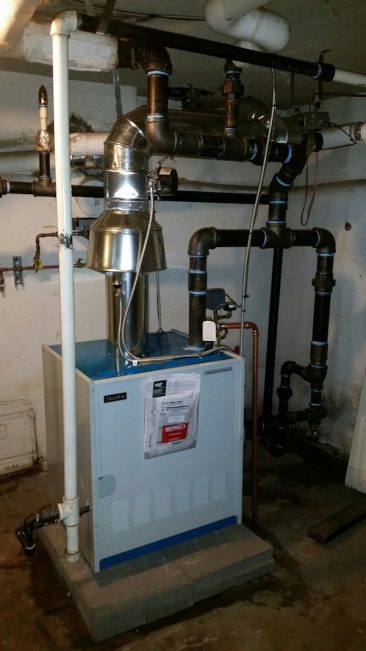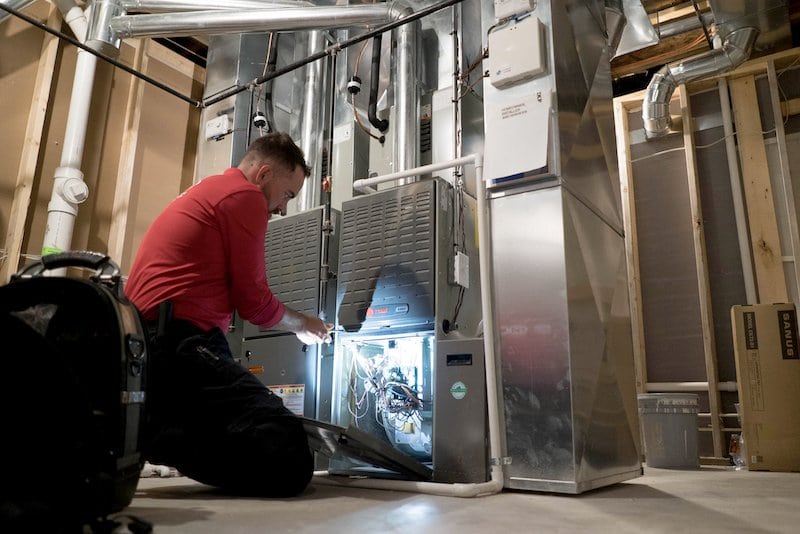As the winter weather sets in and we turn on our furnaces, boilers, and heating systems to warm our homes, it is a wise choice to also keep in mind one more thing – carbon monoxide (CO). This colorless, odorless gas is nicknamed “The Silent Killer” for good reason – you don’t know it is there until it is too late.
The U.S. federal government documents some 2 million poisoning reports each year across the nation, thousands of which are from carbon monoxide poisoning. Fortunately, there are a number of things you can do to ensure the safety of your home and all the people in it.
What You Need to Know About Carbon Monoxide Levels

What Does Carbon Monoxide Smell Like?
It doesn’t! Carbon monoxide is a colorless, odorless gas. That is what makes it so dangerous.
Who Is Most Vulnerable And Likely To Show Carbon Monoxide Poisoning Symptoms First?
Infants, pregnant women, and the elderly are especially susceptible to carbon monoxide.
What Is Carbon Monoxide Poisoning?
Carbon monoxide poisoning occurs when the oxygen in a person’s bloodstream is displaced by carbon monoxide. It suffocates the cells and can cause illness or death.
What Are The Symptoms Of Carbon Monoxide Poisoning?
Signs of carbon monoxide poisoning include many of the same symptoms of the common cold, the flu, or exhaustion, which makes it even harder to detect. Call your doctor or head to the E.R. if you have been experiencing flu-like symptoms, fatigue, headaches, and/or depression that seem to last longer than a normal cold or bout of the flu would. Symptoms also include dizziness, nausea, physical weakness, vomiting, chest pain, unconsciousness, and confusion. These can be signs of long-term exposure to low/increasing CO levels. This can lead to brain and organ damage or even death.
What Are The Sources Of Carbon Monoxide In The Home?
Furnaces, boilers, heating systems.
Is A Carbon Monoxide Detector And A Carbon Monoxide Alarm Enough?
In short, the answer is no. A smoke and carbon monoxide detector will alert you to dangerous CO levels. There are different kinds of detectors, so it is important to invest in the right one. Some only sound when CO levels are high and, ultimately, only after you have been exposed for a long period of time and it may be too late. Instead, invest in a commercial-grade monitor with a digital display. These are low-level detectors, meaning they reduce your exposure time, long-term effects, and save your life.
How Far Should A Carbon Monoxide Detector Be From The Furnace?
It is best practice to put a CO detector near the furnace, one on each floor of your residence, and one near each sleeping area of your home.
Preventing Carbon Monoxide Poisoning

By doing so, you will avoid the dangers of carbon monoxide in your home and CO poisoning. If it happens to slip your mind and you find yourself near the furnace, you might take notice of the following most common risks and signs of a system that needs to be checked for CO leaks/poisoning risk:
- Rust on the top of the heater or the smoke pipe to the chimney
- Cracks
- Age of the equipment
- Improper installation (particularly important if you are moving into a new home or trying to sell yours!)
These will act as a trigger to remind you to call and schedule your yearly servicing and ensure your home is safe and warm this winter!
Other Helpful Resources from Hoffmann Brothers
- How to Unclog a Drain
- AC Not Cooling – Troubleshooting Guide
- Electrical Outlets Safety Checklist
- Eliminating a Sewer Smell in Bathroom and Throughout the House
- How Often To Clean Air Ducts
- Environmental Impacts of Geothermal Energy and HVAC
- Replace a Stab Lok Breaker in your Federal Pacific Electrical Panel



